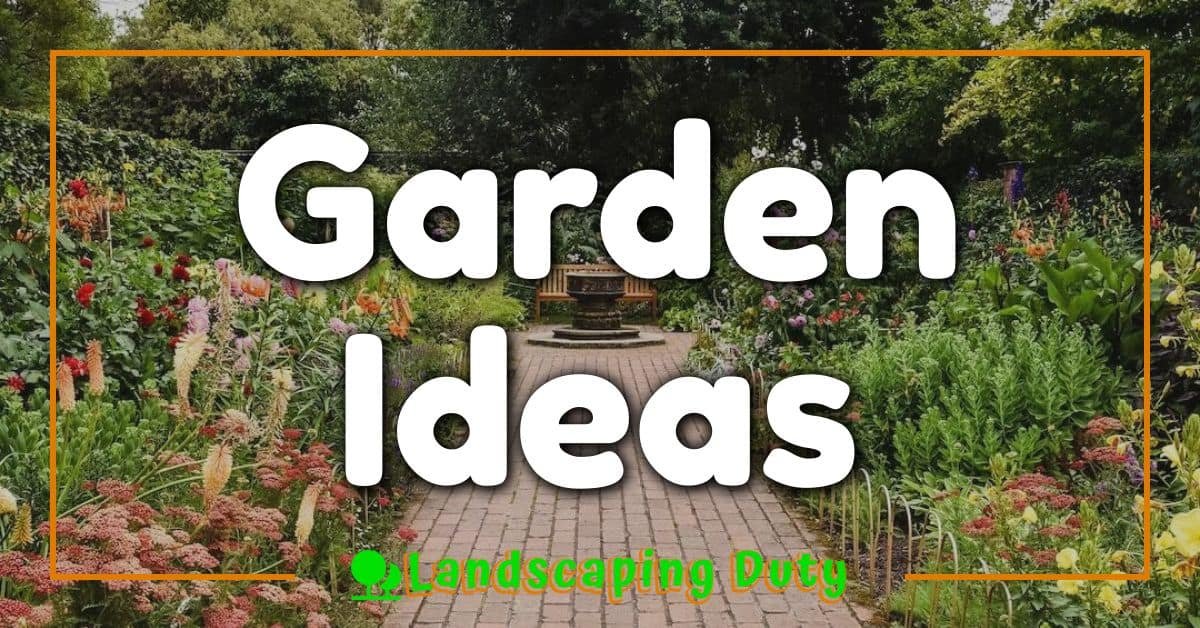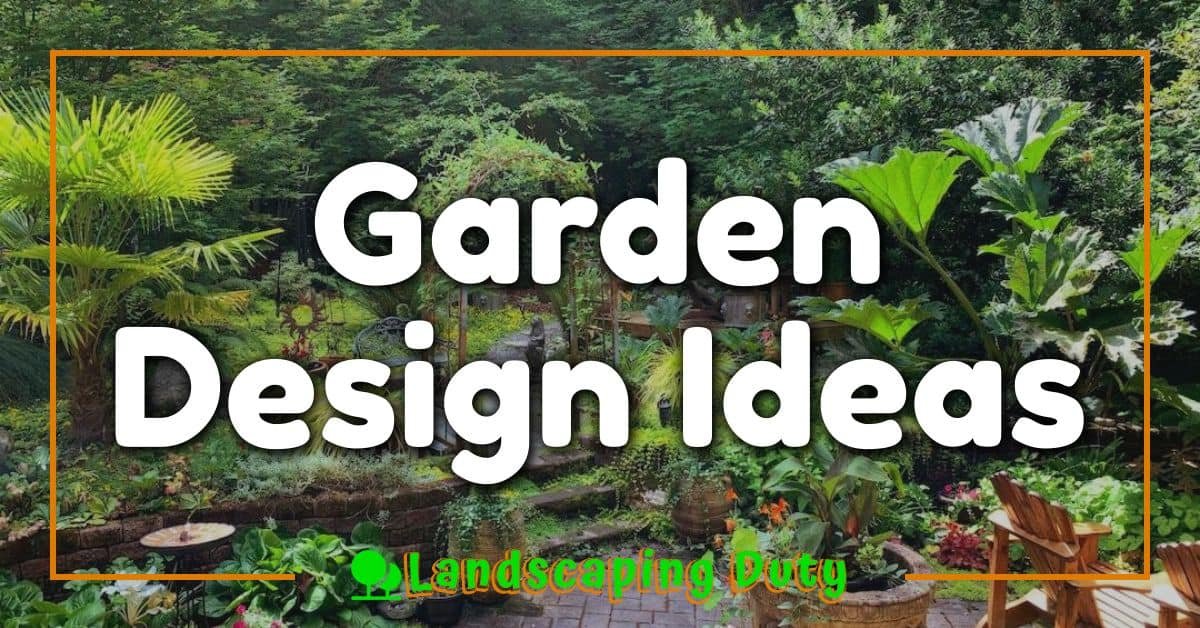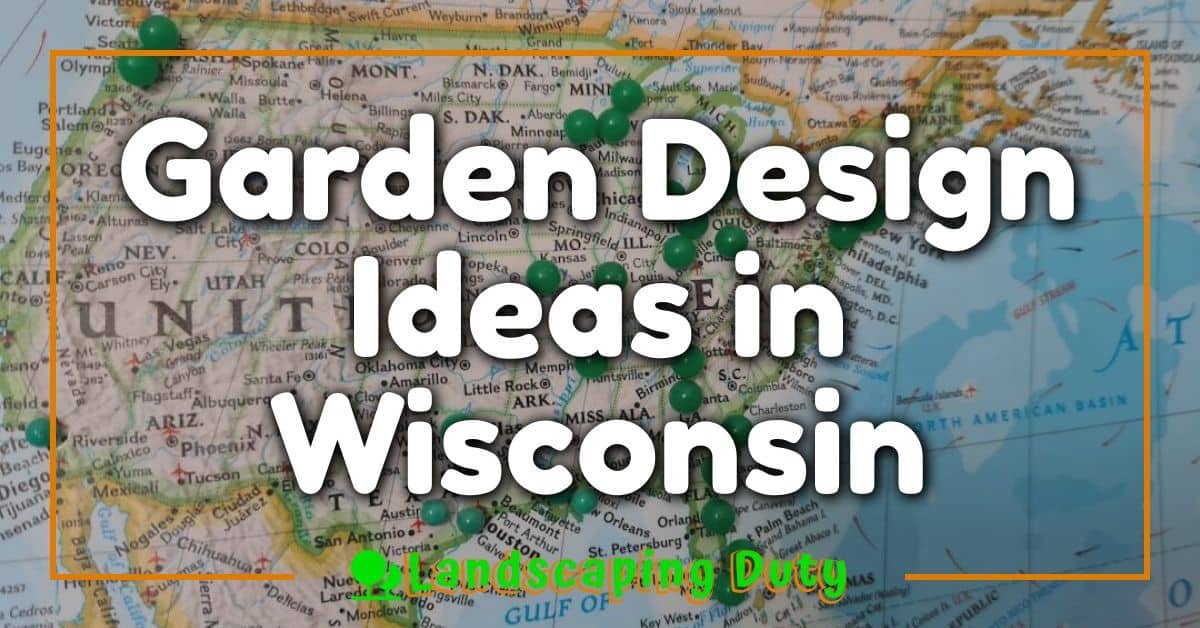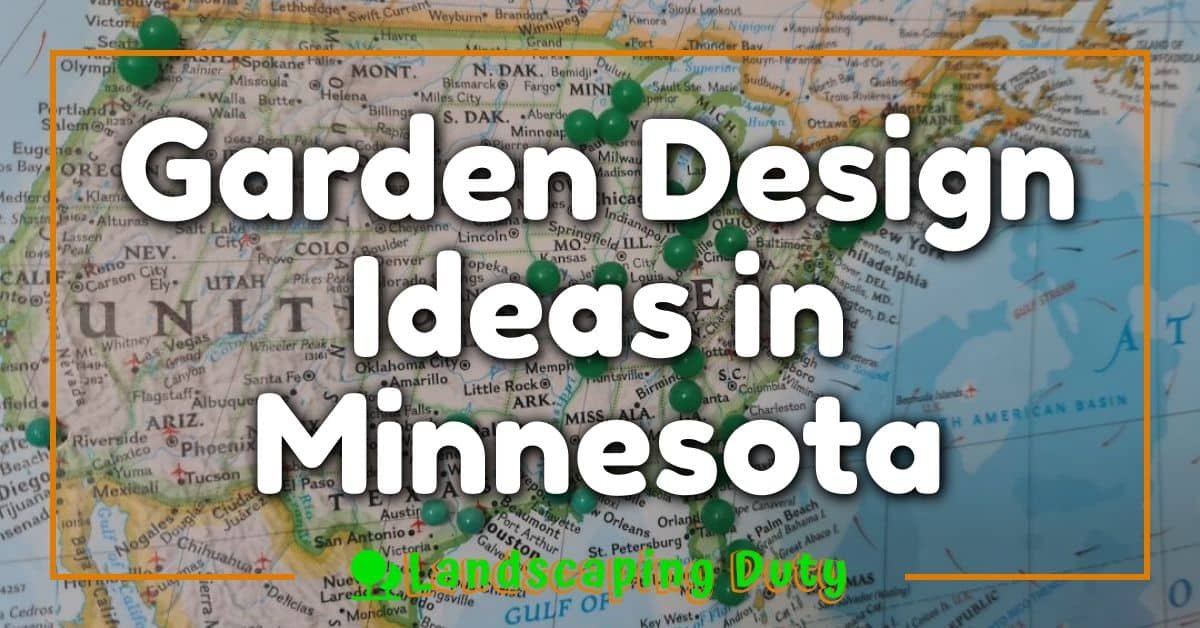If you’re living in Washington and you’re feeling the itch to spruce up your garden, then boy, have you come to the right place! Let’s face it – we’ve all been spending a lot more time at home these days. And what better way to enhance that experience than by creating a lush, inviting oasis right in your own backyard? With Washington’s mild climate and abundant rainfall, there are endless possibilities when it comes to designing your garden.
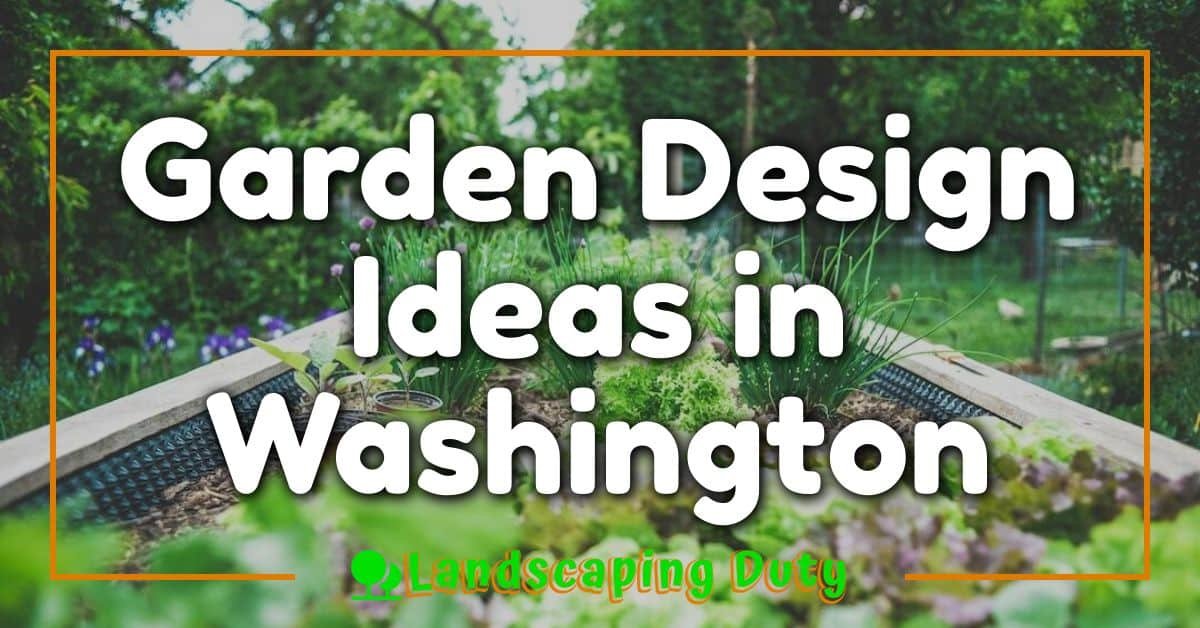
Now you might be thinking, “Where do I even start?” Well, don’t worry! Whether you’re an experienced gardener or just starting out, we’ve got some creative ideas that will transform your space into a stunning sanctuary. From thoughtfully planned landscapes featuring native plants to cozy fire pits for those chilly nights – there’s something here for everyone.
So let’s dive right into some of these fabulous ideas. Remember, it’s not just about planting flowers and calling it a day. We’re talking about creating an environment that reflects your style and meets your needs. So grab a cup of coffee (or tea if that’s more your speed), sit back and let us guide you through this fun journey of garden design ideas in Washington.
Understanding Washington’s Garden Styles
Welcome to the wonderful world of gardening in Washington! You might be wondering what makes this place special. Well, let’s dive right in and explore together.
First off, it’s worth noting that Washington is a state with diverse landscapes. From the coastal areas to its urban centers, there’s quite an array of garden styles to appreciate. Many are influenced by the natural environment and climate conditions. For instance, you’ll find Coastal Gardens near bodies of water, where plants need to withstand salty air and strong winds.
In contrast to that, woodland gardens are common in more forested regions. They’re designed to blend seamlessly with their surrounding environment and often feature native plants like ferns and azaleas. Going towards the east side of the state where summers can get hot? You’ll see xeriscapes becoming popular – these are low-water-use gardens which incorporate drought-resistant plants such as lavender and sage.
And we can’t forget about one major influence on Washington’s garden styles – sustainability! Gardeners here aren’t just interested in making their yards look pretty; they’re also committed to conserving resources and supporting local wildlife. Hence the rise of organic gardens where vegetables are grown without synthetic pesticides or fertilizers, rain gardens that improve water quality by filtering runoff before it reaches streams or lakes, and pollinator-friendly gardens filled with nectar-rich blooms for bees butterflies!
Here’s a brief summary:
- Coastal Gardens: Designed for saltwater environments.
- Woodland Gardens: Blend seamlessly into forested surroundings.
- Xeriscapes: Low-water-use gardens for hot summer areas.
- Organic Gardens: Vegetable growing without synthetic pesticides/fertilizers.
- Rain Gardens: Improve water quality by filtering runoff.
- Pollinator-friendly Gardens: Filled with nectar-rich blooms for bees & butterflies.
So you see? There’s no one-size-fits-all approach when it comes to gardening in Washington. You’ve got a whole palette of styles to choose from, each with its own unique charm and appeal. Now that’s something to get excited about!
Incorporating Native Plants in Your Garden Design
Imagine setting foot on your backyard’s turf, sipping a morning brew, while basking in the glory of Washington’s native flora. Sounds like a dream? Well, it’s time to make it your reality! Let’s delve into how you can incorporate these local beauties into your garden design.
First off, why should you opt for native plants? They’re more than just pretty faces – they play an integral role in maintaining biodiversity. Here in Washington, our ecosystem is teeming with indigenous species that birds and insects have co-evolved with. When we use these plants in our gardens, we’re not only creating an aesthetically pleasing landscape but also providing essential habitats and food sources for local wildlife.
The beauty of designing with natives lies in their adaptability. These plants are naturally acclimated to our region’s climate and soil conditions; hence they typically require less water and fewer fertilizers compared to non-native species. This means you’ll save on water bills and contribute to a healthier environment by reducing chemical runoff!
Not sure where to start? Here are some popular native options:
- The Pacific Rhododendron: Known as the state flower of Washington
- Western Sword Ferns: These hardy evergreens create lush ground cover
- Vine Maples: Perfect choice for adding fall color
Remember though, successful gardening doesn’t mean cramming as many different plant types as possible – it’s about achieving balance! So consider layering various shrubs, trees, perennials, and grasses for height variation keeping harmony within color schemes.
So there you have it! By incorporating native plants into your garden design here in Washington State, you won’t just be crafting a space that wows visually – but also one that nurtures the natural ecosystem around us. Now isn’t that something worth digging into?
Garden Design Ideas for Small Spaces in Washington
Living in the Evergreen State, you’re no stranger to breathtaking landscapes and lush greenery. But what if your outdoor space isn’t as expansive as the beautiful Washington wilderness? No worries, there’s plenty of room for creativity even in small garden spaces!
Let’s start with vertical gardening. It’s a fantastic way to maximize limited square footage. You can transform your tiny yard into a thriving green oasis by simply growing upwards! Climbing plants like clematis or honeysuckle not only save space, but also add a touch of nature’s charm to your urban dwelling.
What about container gardening? It’s another smart solution when ground space is scarce. From decorative flower pots on the patio to hanging baskets dangling from balconies, containers enable you to plant just about anywhere! Plus, they’re movable – giving you that flexibility to rearrange whenever you fancy a change.
Now think native plants. They’re adapted to our local Washington climate and typically require less maintenance. Choices like the Pacific bleeding heart or Western trillium are perfect for low-maintenance yet visually appealing gardens.
« Garden Design Ideas in New York: Your Guide to an Urban Oasis Garden Design Ideas in North Dakota: Your Ultimate Guide to a Stunning Outdoor Space »
Don’t forget multi-purpose furniture too! A bench doubling up as storage box or an ottoman serving as both seating and table can be real life-savers in tight spaces while keeping everything tidy.
And finally, mirrors aren’t just meant for indoors – they can create an illusion of bigger garden areas too! Strategically placed mirrors can reflect light around your garden and make it appear larger than it really is!
With these tips at hand, designing small gardens in Washington certainly doesn’t mean scaling down on beauty or functionality!
Water-Efficient Gardening: A Necessity in Washington
You might wonder, “Why is water-efficient gardening a big deal in Washington?” Well, despite the state’s reputation for persistent rainfall, summers can be surprisingly dry. Consequently, gardeners often need to compensate for this seasonal drought by watering their plants more frequently. This practice not only shoots up your water bill but also contributes to water scarcity.
Now you’re probably thinking, “So how do I keep my garden thriving without guzzling gallons of water?” The answer lies in clever garden design and planting drought-resistant plants. By incorporating native species into your landscape such as the Western Redbud or Oregon Grape Holly, you’ll have a beautiful garden that requires less watering. These plants are accustomed to the local climate and soil conditions which makes them more resilient during dry spells.
But that’s not all! You could also opt for mulching around your plants. It’s an effective strategy to reduce evaporation from the soil surface and regulate soil temperature. Plus it adds nutrients back into the soil too!
Looking at numbers can provide us with clearer insight:
| Water Consumption (Gallons per week) | |
|---|---|
| Regular Garden | 100-150 |
| Drought Resistant Garden | 20-30 |
As evident from these stats, transitioning to a water-efficient garden considerably reduces water consumption.
Implementing these ideas won’t just save money on your bills or conserve precious resources; they’ll also create a unique aesthetic for your outdoor space that blends seamlessly with Washington’s natural beauty. So why wait? Start planning your eco-friendly backyard oasis today!
Adding Architectural Elements to Your Garden
Let’s dive into the world of garden design. You know, adding architectural elements to your garden is one of the best ways to give it a unique and personalized touch. Think about it as art for your outdoor space.
First off, consider incorporating gazebos or pergolas. These structures not only provide shade on those hot Washington summers but also serve as a focal point in your garden. They’re perfect for hanging plants or setting up cozy seating areas for you and your guests to enjoy.
Now, if you’re more into water features, how about installing a fountain or pond? It’s been found that the sound of running water can help reduce stress levels – imagine having that right in your backyard! Plus, they attract wildlife like birds and butterflies which can add life and movement to your garden.
Next on our list are pathways. Ranging from brick and stone paths to rustic wood-chip trails, these create structure while guiding visitors through different sections of your garden. And don’t forget about arbors – these decorative archways can frame entrances or act as transitional points between different parts of the yard.
Lastly, let’s talk about sculptures – those small details that make a big difference. Whether it’s an antique sundial, a modern metal piece, or even something whimsical like gnome statues – they add character and charm to any landscape!
Here’s a quick recap:
- Gazebos & Pergolas: Provide shade and serve as focal points
- Fountains & Ponds: Offer calming sounds & attract wildlife
- Pathways: Guide visitors through various sections
- Arbors: Frame entrances/transitional points
- Sculptures: Add personality with fun details
So get creative with these architectural elements! Remember – there are no rules when designing YOUR dream garden.
How to Choose the Right Plants for your Washington Garden
When it comes to designing your garden in Washington, one of the most important decisions you’ll make is choosing the right plants. It’s not just about picking what looks good. You’ve got to consider a ton of factors: the type of soil in your garden, how much sunlight it gets, and even local wildlife that might have a taste for certain plants.
Firstly, let’s talk about Washington’s climate. We all know it can be unpredictable with its mix of sun and rain. So you’ll want to choose plants that can handle this variability. Hardy perennials like Hostas or Daylilies are a great option because they’re pretty tough and can withstand different weather conditions.
But hey, don’t forget about native plants! They’re already adapted to our local climate and tend to require less maintenance than non-native species. Plus, they provide food and shelter for local wildlife which is always a bonus! Some popular options are Western Red Cedar or Salal shrub.
Now here’s something many folks miss out on – considering how much sunlight your garden gets each day. Do you have full sun exposure? Then go for Sunflowers or Coneflowers! More shade than sunshine? Ferns or Foxgloves could be your new green buddies!
Lastly, always consider your soil type before bringing home any plant babies. If you’ve got sandy soil in your backyard, Heather or Lavender will love it there! But if clay prevails underfoot then maybe Rhododendrons will feel more at home.
Remember, gardening isn’t just an art – it’s also science! By taking into account these factors when selecting plants for your Washington garden, you’ll create a harmonious outdoor space that thrives year-round.
- Hardy Perennials: Hostas & Daylilies
- Native Plants: Western Red Cedar & Salal Shrub
- Sun-Loving Plants: Sunflowers & Coneflowers
- Shade-Loving Plants: Ferns & Foxgloves
- Sandy-Soil Lovers: Heather & Lavender
- Clay-Soil Lovers: Rhododendrons
Seasonal Planting Tips for a Colorful Year-Round Garden
Washington’s distinct seasons offer a unique opportunity to design a colorful, year-round garden. Let’s dive into some tips that’ll guide you through the seasonal planting process and give your outdoor space exactly what it needs.
Spring is when your garden comes back to life after winter. It’s the perfect time to plant colorful flowers like tulips, daffodils, and irises. Remember, these bulbous beauties should be planted in fall so they can bloom in spring.
Come summer, your garden will thrive with vibrant roses, hydrangeas, and geraniums. These plants love the warm weather! It’s also an ideal season for edible plants. Think tomatoes, bell peppers or strawberries – not only do they add color but double up as fresh produce right in your backyard!
As fall rolls around, it doesn’t mean saying goodbye to color just yet! Asters and chrysanthemums are great choices as they bloom well into autumn. Don’t forget about trees either; maples and oaks turn stunning shades of red and orange during this time.
Now we’ve reached winter – often overlooked as a barren season but there’s still hope! Holly bushes with their vibrant berries or evergreens like spruces keep their lush foliage all year round ensuring your garden never looks dull.
To make things easier:
- Spring:
- Tulips
- Daffodils
- Irises
- Summer:
- Roses
- Hydrangeas
- Geraniums
- Fall:
- Asters
- Chrysanthemums
- Winter:
- Holly bushes
- Spruces
With these tips at hand, you’re now ready to take on the challenge of creating a lively Washingtonian garden that brings joy no matter what the season is!
Conclusion: Creating Your Ideal Washington Garden
Alright, you’ve made it! You’re now equipped with some of the best garden design ideas in Washington. Remember, transforming your outdoor space isn’t about replicating someone else’s garden. It’s about creating a serene oasis that speaks to you and your lifestyle.
You may be drawn towards native plants like the Pacific Dogwood or the Western Trillium for their resilience and minimal care needs. Or perhaps you’re envisioning a Zen-like retreat dotted with Japanese Maples and Azaleas. Whatever your heart desires, there’s a design idea out there waiting to take root in your backyard.
When planning, consider these key factors:
- Space: How much room do you have? This will determine whether you go for an expansive lawn or stick with container gardening.
- Sunlight: Do certain areas get more sun than others? Plant accordingly.
- Soil type: Different plants thrive in different soil types. Know yours before planting.
- Maintenance level: Be honest about how much time and energy you can dedicate to tending your garden.
Let’s not forget the power of accessories too. Water features, bird feeders, benches – they all add character to your green space while also serving practical purposes.
Remember this journey is as much about process as it is about results. Don’t be disheartened if things don’t turn out perfect right away; gardening is an art that takes time to master. But once everything falls into place (and trust me, it will), you’ll find joy not just in the beauty of your new Washington garden but also in the memories etched during its creation.
To sum up:
- Plan based on space availability
- Take note of sunlight distribution
- Understand soil type
- Gauge maintenance level
Now go ahead! Embrace nature’s charm and let it spill over into every inch of your garden. Happy gardening!








